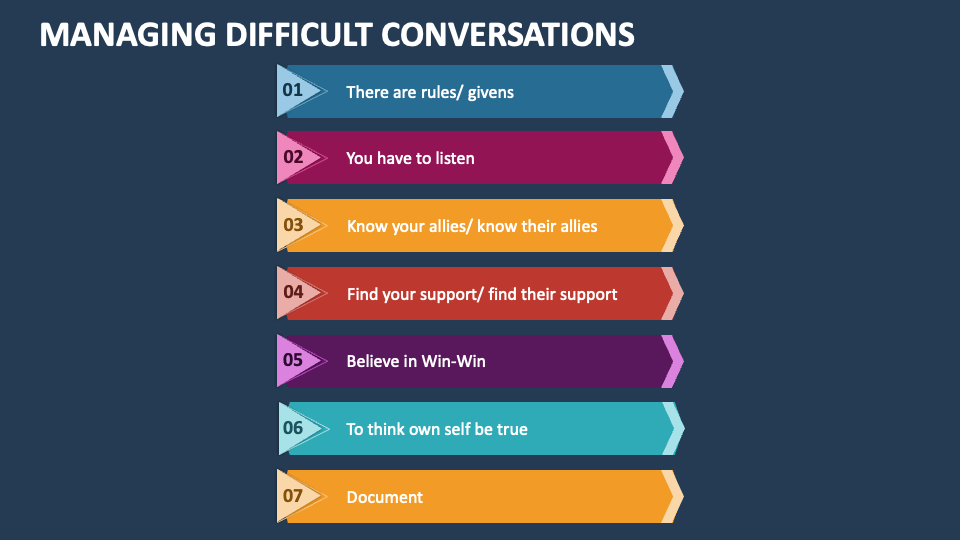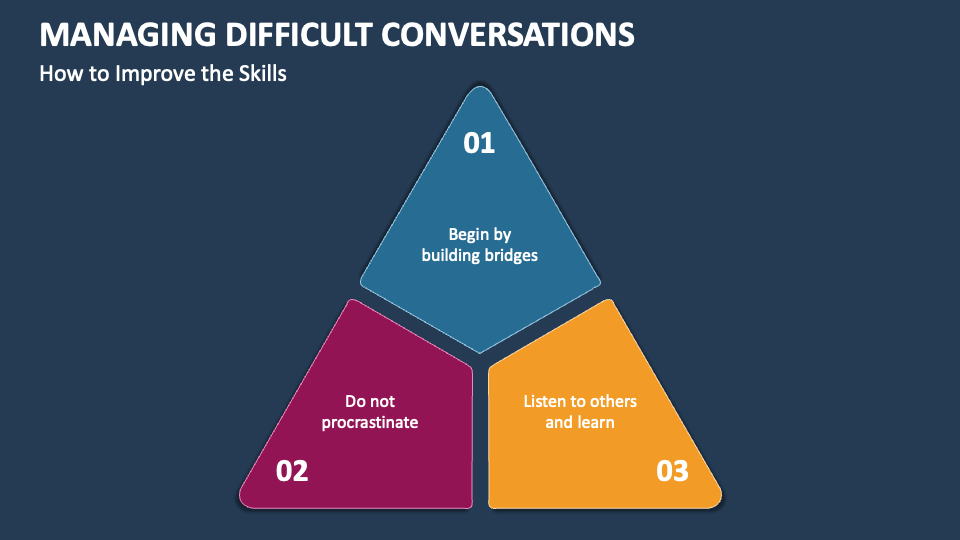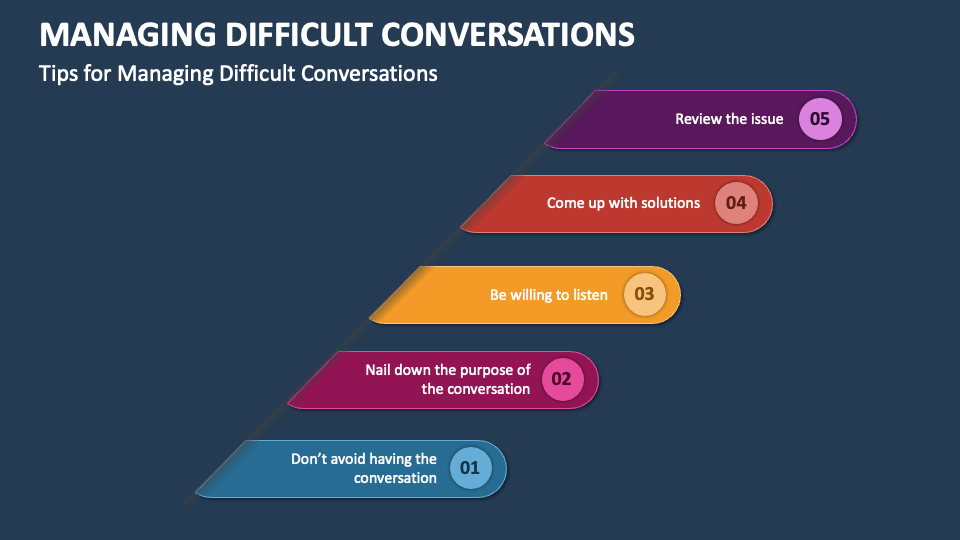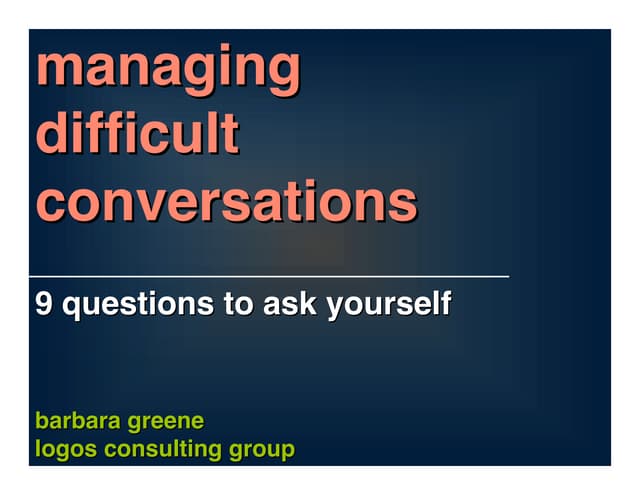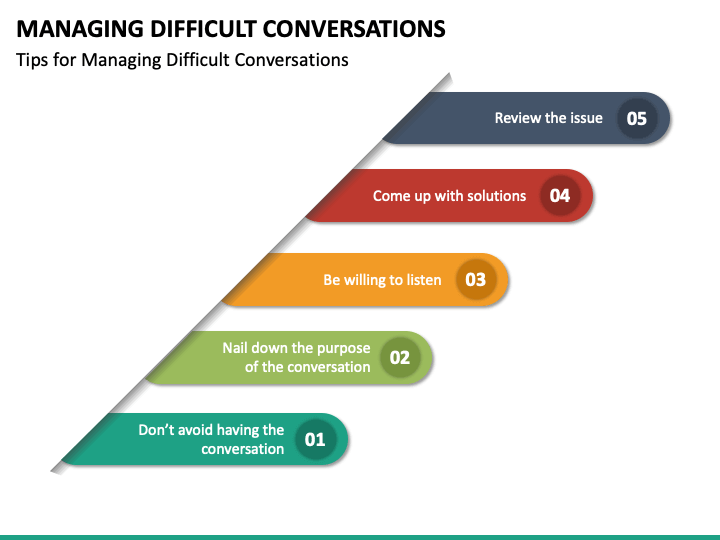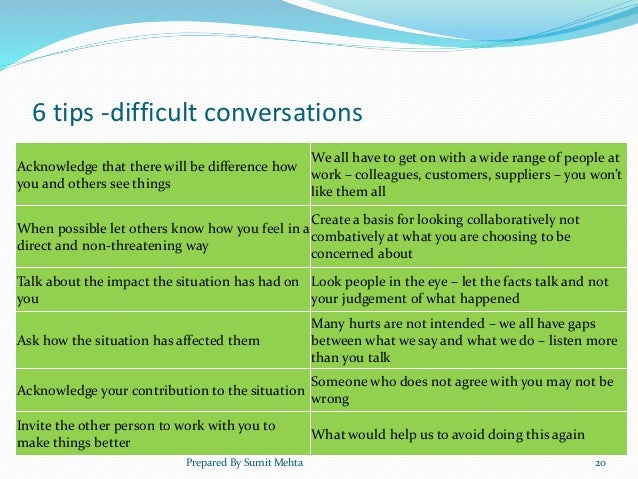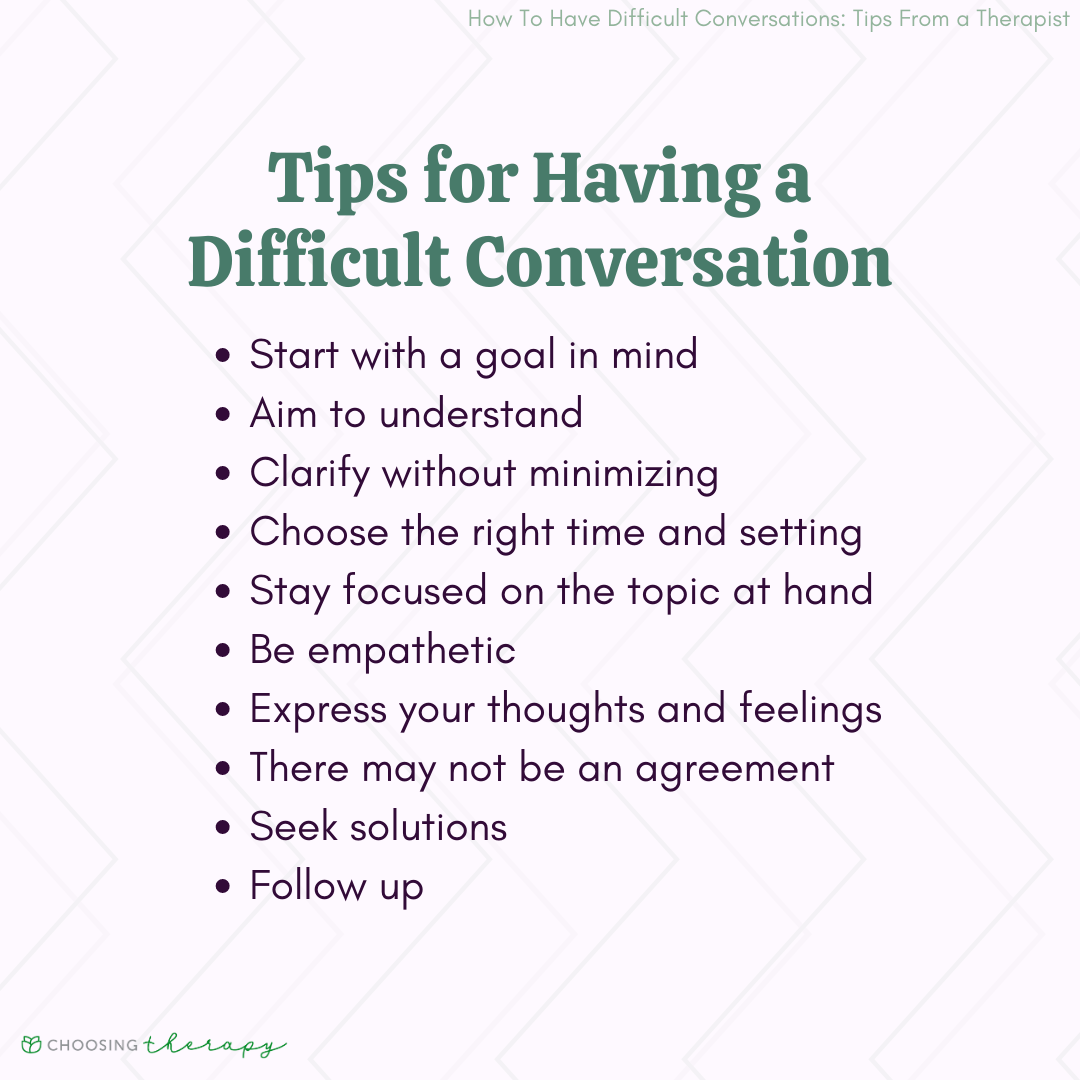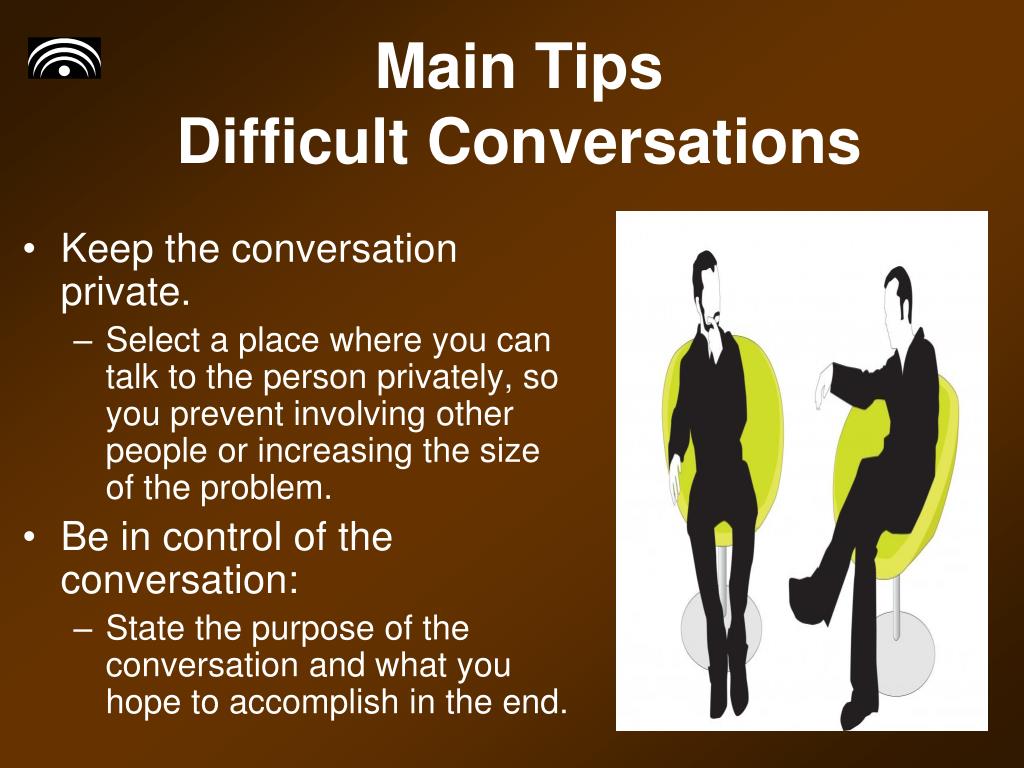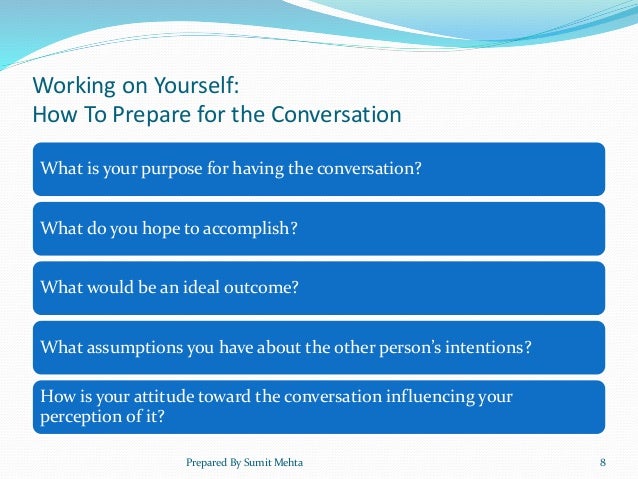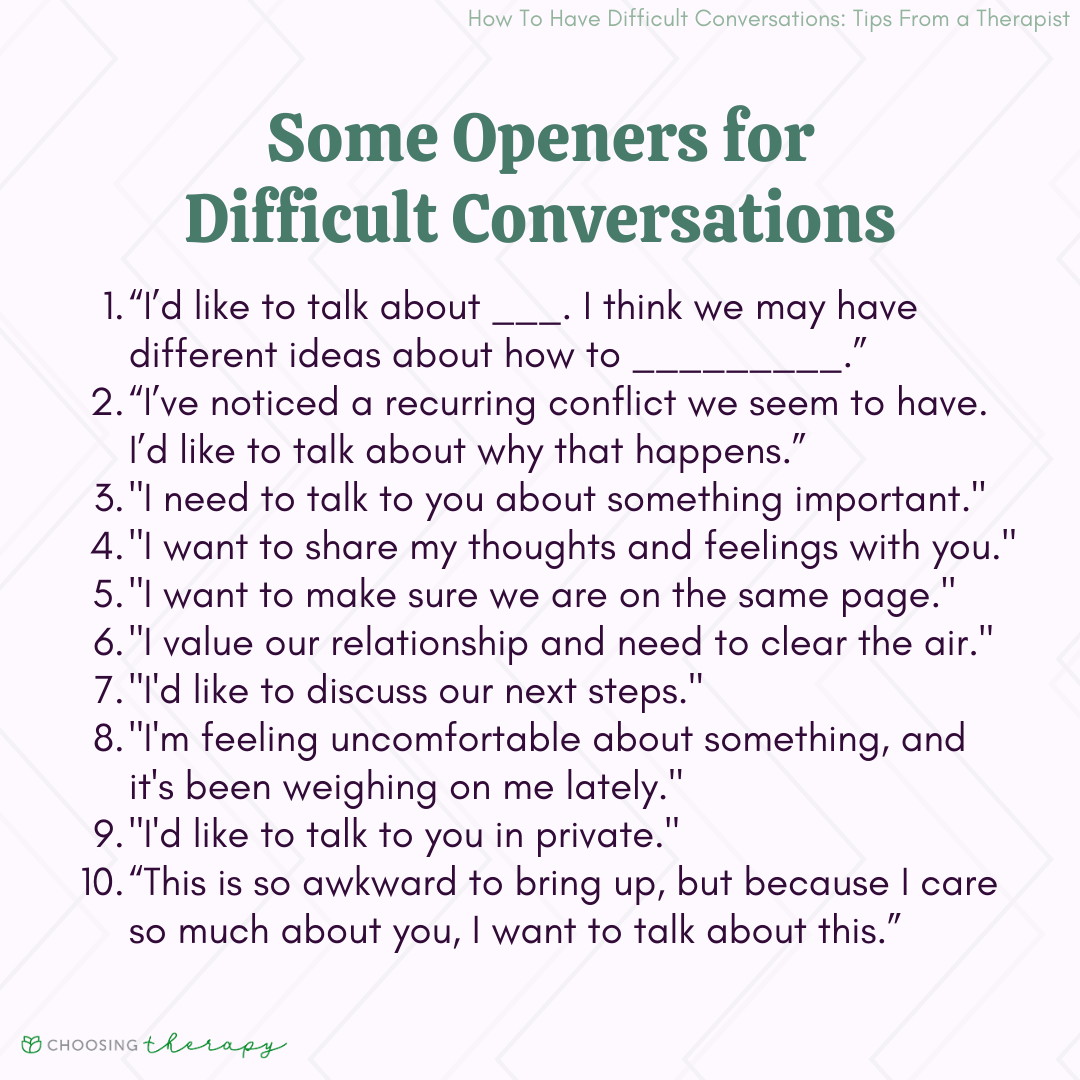Managing Difficult Conversations Examples

Imagine the knot in your stomach as you prepare to speak with a colleague whose performance is slipping, or the apprehension you feel before addressing a friend about a hurtful comment. These aren't just everyday occurrences; they're crucial moments that define our relationships and shape our work environments. The art of navigating these challenging conversations is a skill we all need to develop.
At its heart, managing difficult conversations effectively boils down to empathy, preparation, and a commitment to finding a mutually respectful resolution. While avoidance might seem tempting, proactively addressing uncomfortable topics can prevent escalation and foster stronger, more authentic connections, both personally and professionally.
Why Are Difficult Conversations So… Difficult?
The difficulty stems from our inherent human nature. Conflict triggers our "fight or flight" response, flooding our bodies with stress hormones. This can lead to defensiveness, emotional reasoning, and a diminished capacity for active listening.
Research from the Harvard Negotiation Project highlights the importance of separating the person from the problem. Framing the conversation around specific behaviors or situations, rather than making personal attacks, is crucial for a productive dialogue.
Practical Examples and Strategies
Let's consider a few common scenarios and explore practical approaches to handling them.
Scenario 1: Addressing Performance Issues with a Colleague
Instead of saying, "Your work has been subpar lately," try: "I've noticed a few instances where deadlines haven't been met, and I'm concerned about the overall project timeline. Can we discuss what challenges you're facing and how I can support you?"
Focus on specific examples and offer assistance rather than simply criticizing. Remember to actively listen to their perspective and collaborate on solutions. Document the conversation and agreed-upon next steps for accountability.
Scenario 2: Resolving Conflict with a Friend
Avoid accusatory language like "You always do this!" Instead, use "I" statements to express your feelings: "I felt hurt when you made that comment. It made me feel like my feelings weren't being considered."
According to studies in interpersonal communication, active listening is key to defusing tension. Pay attention to both verbal and nonverbal cues. Validate their feelings, even if you don't agree with their perspective.
Scenario 3: Giving Constructive Feedback to a Team Member
Start with positive reinforcement. Acknowledge their strengths before addressing areas for improvement. For example: "I really appreciate your creativity on this project. However, I think we could refine the presentation to be more concise and impactful."
Be specific and provide actionable suggestions. Offer ongoing support and check in regularly to monitor progress. Remember, feedback should be a gift, not a punishment.
The Importance of Preparation
Before initiating a difficult conversation, take time to prepare. Reflect on your own emotions and motivations. What do you hope to achieve? What are your non-negotiables?
Consider the other person's perspective. Try to anticipate their reactions and plan your responses accordingly. Practice your opening statement and visualize a positive outcome.
Choose the right time and place. A private, neutral setting is generally best. Ensure you have ample time to dedicate to the conversation without feeling rushed or interrupted. Timing is everything.
Beyond the Conversation: Follow-Up and Reflection
The conversation itself is just one step in the process. Follow up with the individual to check on their progress and offer continued support. Be open to revisiting the conversation if necessary.
Reflect on your own performance. What did you do well? What could you have done differently? Continuous learning is essential for improving your communication skills.
Ultimately, mastering the art of difficult conversations requires courage, empathy, and a commitment to growth. By embracing these challenging moments, we can build stronger relationships, foster more productive work environments, and create a more harmonious world, one conversation at a time.
